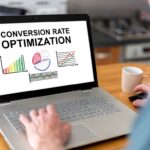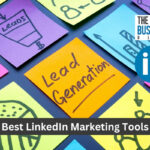In the modern business world, lead generation is crucial for companies looking to increase their customer base and grow their revenue.
A well-designed lead generation pipeline can help businesses identify potential customers, build relationships with them, and convert them into paying customers.
However, building a productive lead generation pipeline can be an uphill task, particularly for businesses with limited resources. But it can be a rewarding and exciting process with the right strategies.
To create a successful lead generation pipeline, consider these actionable tips:
Post Contents
1.) Define Your Target Audience
To build an efficient lead generation pipeline, you can start by defining your target audience.
How can you attract high-quality leads if you don’t know who you’re trying to target? You need to get into the minds of your ideal customers and figure out what makes them tick.
You can use an enrichment tool to gather information about your target market, such as demographics and psychographics. Afterward, consider the following:
- What are their pain points?
- What are their goals and aspirations?
- What are their characteristics and preferences?
Once you have a solid grasp of your target audience, you can tailor your marketing messages and strategies to better resonate with them.
2.) Develop A Compelling Value Proposition
Once you’ve nailed down your target audience, it’s time to start developing a compelling value proposition.

A value proposition is a statement that clearly and concisely outlines the benefits of your product or service to your target audience.
It’s your chance to show potential customers what sets you apart from your competitors and why they should choose you.
You’re just another face in the crowd without a strong value proposition. So, take the time to craft a killer value proposition that speaks directly to your target audience’s pain points and needs.
3.) Leverage Multiple Marketing Channels
To reach your target audience and generate more leads, you have to leverage multiple marketing channels.
These include social media, email marketing, content marketing, search engine optimization (SEO), paid advertising, and whatever else you can think of.
Using multiple channels, you can reach potential customers at different stages of the buyer’s journey and increase your chances of converting them into paying customers.
Plus, it keeps things fresh and exciting for your audience. After all, who doesn’t love a little variety?
4.) Use Lead Magnets
A lead magnet is a free resource that you offer to potential customers in exchange for their contact information.
Think e-books, whitepapers, webinars, free trials, and all that good stuff. By providing value, you can attract potential customers to your business and start building a relationship with them.
It’s a win-win situation: you get their contact information, and they get access to valuable information that can help them solve a problem or improve their lives.
5.) Optimize Your Landing Pages
A landing page is a web page specifically designed to convert visitors into leads or customers.
To optimize your landing pages, you must ensure they’re visually appealing, easy to navigate, and have solid call-to-action (CTA).
These elements are necessary to ensure your landing pages are stable and can convert visitors into leads.
You can test different variations of your landing pages to see which ones perform best.
Remember, a landing page is a critical component of your lead generation pipeline, so make sure you give it the attention it deserves.
6.) Nurture Your Leads
Lead nurturing is crucial for building an efficient lead generation pipeline. It involves building relationships with your leads by providing valuable content, addressing their pain points, and answering their questions.
Nurturing your leads allows you to gain their trust and build your credibility, increasing the likelihood of converting them into paying customers.
Remember, the key to successful lead nurturing is to provide value at every stage of the buyer’s journey.

7.) Qualify Your Leads
To focus your resources on leads that are more likely to convert into paying customers, you need to qualify them.
This can be done by lead scoring, ranking your leads based on their engagement and interest level, or using lead qualification frameworks to identify those that meet your specific criteria.
In essence, qualifying your leads keeps you from wasting resources on leads that are unlikely to convert.
8.) Use Marketing Automation
Marketing automation is a game-changer for your lead-generation efforts. Automating repetitive marketing tasks like email marketing and lead nurturing can streamline your processes and allow you to focus on other crucial aspects of your business.
And that’s not all—marketing automation also lets you easily track and analyze your data, empowering you to make data-driven decisions and optimize your pipeline for better results.
9.) Measure Your Results
To build a successful lead generation pipeline, measuring and continuously improving your results is crucial.
This means tracking website traffic, conversion rates, and lead generation metrics, as well as identifying areas of improvement to optimize your pipeline.
Continuously testing new marketing channels, refining your messaging, and revising your lead qualification criteria can help you stay ahead of the competition and ensure your pipeline always operates at peak efficiency.
Conclusion
Building a successful lead generation pipeline requires a strategic and multifaceted approach. It’s a journey that demands creativity, determination, and a never-settle-for-less attitude.
But with the right steps and tools in place, your efforts will pay off. So, keep striving for excellence and watch your business soar to new heights.






























